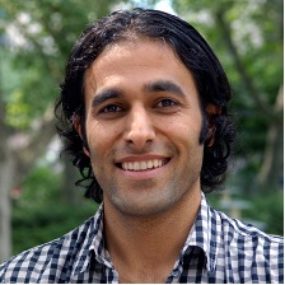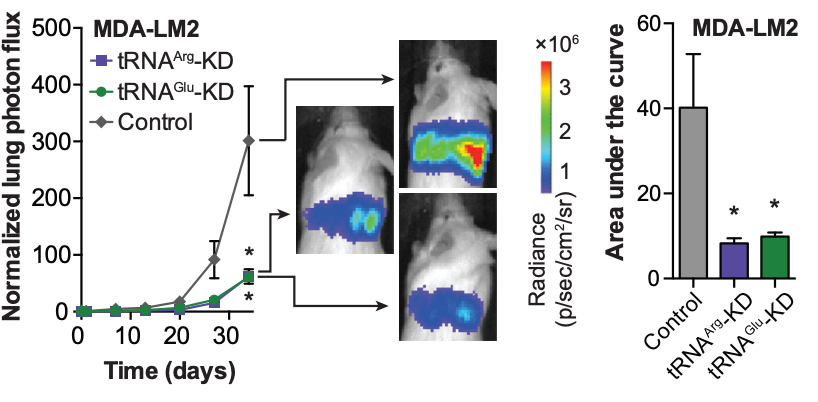
Stories
Sohail Tavazoie: Captivated by Science

Sohail Tavazoie grew up in Utah after his family immigrated to the United States from Iran, escaping the Iran-Iraq war. As his parents created a new life for their family, working at a computer disk manufacturing start-up, Tavazoie and his siblings attended the local school system and adjusted to their new home. However, there was something that remained as a constant for him amongst these changes. “I have been captivated by science and science fiction for as long as I remember. My father was an engineer and my mother a teacher. They always took extra time to teach us and to provide rationales for their answers,” he remembers.
Tavazoie attended Brighton High School in Cottonwood Heights, Utah—a large public high school where he remembers many incredible teachers who were committed to educating students and their profession. While a student at Brighton, he completed his first research experience as an intern in the lab of John Roth at the University of Utah. While interning in the Roth lab, Tavazoie studied bacterial genetics, specifically the B12 biosynthetic gene cluster in Salmonella typhimurium. “I recall John taking us to the incubator, removing plates with a few colonies on them, putting one up to the light and asking us, ‘Isn’t that amazing?’ And it was amazing when you considered the biochemical, molecular, and metabolic events leading to the formation of that colony. I spent two full summers in John’s lab, and I was fully hooked on biology,” says Tavazoie.
The summer experiences in the Roth lab stayed with Tavazoie as he moved on to attend college at University of California, Berkeley—training in neuroscience with Carla Shatz—and later to Harvard University, where he earned an M.D./Ph.D. and conducted his graduate research with R. Clay Reid and postdoctoral work with Bernardo Sabatini. Tavazoie’s dissertation focused on how neuronal connections form between the eyes and thalamus during development of the visual system. These mentors continued to inspire and influence him along his path to becoming a neuroscientist—a very different route from the bacteria that ignited his science spark initially.
As a physician in training, Tavazoie cared for cancer patients who were dying of metastatic disease. From these experiences, he began to wonder about the molecular mechanisms underlying metastasis formation and how to develop therapeutics to target and stop this process. Despite attempts to dissuade him from following this inquiry to focus on something simpler, Tavazoie persisted—comfortable with complexity. During his residency, discussions with his brothers, Masoud and Saeed helped to further shape his interest in pursuing the study of cancer metastasis and gene regulation. “In a taxi ride, my two brothers revealed their excitement about post-transcriptional gene regulation and how it is completely understudied and likely underlies so many aspects of biology, including their own areas of research that they had found was regulated by this process. I didn’t understand half of what they were talking about since I had been away from lab work during my clinical training. I began to wonder if small RNA alterations may underlie cancer metastatic progression, which afflicted my patients. This has been the focus of my studies ever since,” reflects Tavazoie.
“I recall John taking us to the incubator, removing plates with a few colonies on them, putting one up to the light and asking us, ‘Isn’t that amazing?’ And it was amazing when you considered the biochemical, molecular, and metabolic events leading to the formation of that colony. I spent two full summers in John’s lab, and I was fully hooked on biology.”
After completing his residency in internal medicine at Brigham and Women’s Hospital and medical oncology fellowship training at Memorial Sloan Kettering Cancer Center, Tavazoie joined The Rockefeller University as an assistant professor in 2009 and was selected as a Rita Allen Scholar. Looking back, he notes, “I wrote a high-level proposal that in retrospect I’m not proud of and miraculously got an interview. I recall going to a fancy building in midtown New York and seeing Samara Reck-Peterson (RAF 2009) coming out of her interview. I said hello to her and asked how it went. She told me it was kind of rough. My interviewers were famous scientists who asked great yet tough questions. I went away feeling honored to have made it but unsure of how I had done. Lucky for us, both Samara and I made it.”
Tavazoie is now the Leon Hess Professor, Meyer Laboratory of Systems Cancer Biology and director of the Black Family Metastasis Center at The Rockefeller University and senior attending physician at The Rockefeller University Hospital. Over the years he has worked with many remarkable, talented students and postdocs in his lab. Tavazoie explains, “One of our most exciting findings was uncovering hereditary genetics as causally contributing to cancer progression and metastasis. Our cancer studies also unveiled unexpected insights into gene regulation. For example, we found that specific transfer RNAs (tRNAs) become modulated as cancer cells metastasize and observed enhanced translation of transcripts enriched in codons cognate to these tRNAs. Multiple scientists in my lab are studying the basic mechanisms underlying tRNAs dynamics in health and disease. This goes to show that basic science can apply to disease and disease can uncover new areas of basic science investigation.”
The research in the Tavazoie lab mostly focuses on the intersection between small RNA variations and connections to regulators of metastasis across many different cancer types, such as breast, melanoma, and colorectal cancer. His lab has discovered that distinct sets of tissue specific microRNAs can be modulated which alters the expression levels of specific genes leading to metastasis formation. Specifically, these microRNAs converge into pathways regulating genes such as ApoE (melanoma) or Creatine Kinase Brain Type (colorectal cancer), leading to changes in vascular, immunologic, or metabolic processes that enable metastasis formation. From this basic research Tavazoie has also collaborated with other scientists and clinicians at Inspirna Therapeutics to develop small molecules and target these specific metastatic pathways; these potential therapeutics are currently in human clinical testing trials.

Tavazoie recently shared his views on some of the biggest challenges in research, technological transformations advancing science, and where he recharges outside the lab:
What are the biggest challenges in your research?
I think a major challenge for all biomedical research in the U.S. is the rising cost of reagents, equipment and living costs for our scientist trainees and staff, coupled with a lack of commensurate growth in NIH grant budgets. We are also seeing a drop in the number of postdoctoral applications, which is worrisome.
We live in a time when technology is rapidly advancing. Can you speak to how that affects emerging science, and more specifically, how that might change your science and/or your approach to science?
Technological advances are key to scientific progress because they enable us to make new types of observations at scale. My lab has utilized many of these, and students and postdocs in my lab have contributed to the development of new molecular technologies. Innovations that have enhanced computational performance have benefited our science greatly. We have utilized these tools to discover new modes of post-transcriptional regulation from large datasets. Protein structure prediction algorithms and cryo-EM is transforming our collective ability to dissect mechanisms. Machine learning/AI is also impacting multiple aspects of all disciplines, including ours. This is an incredible time to be a scientist.
What do you like to do when you are not in the lab?
I spend most of my time outside the lab with my family. We go on hikes, play soccer, bike and visit museums and performances.